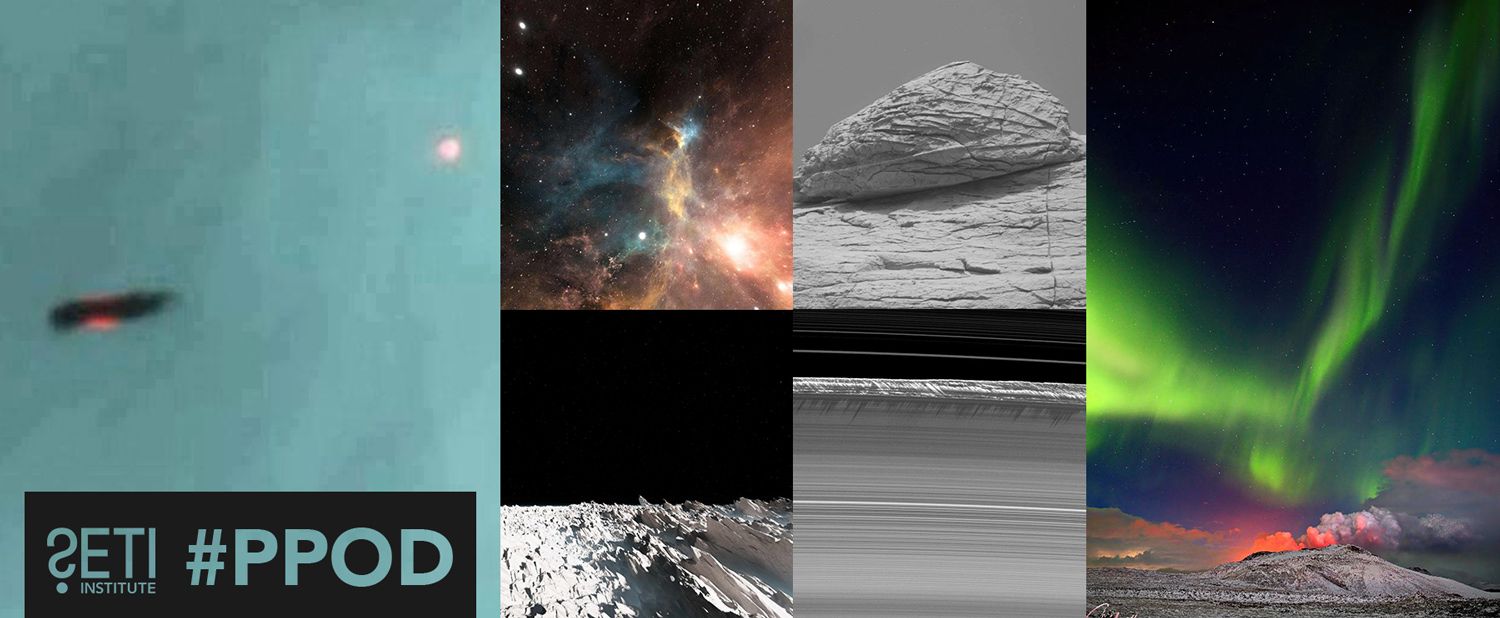
Planetary Picture of the Day
Week of April 5, 2021
Welcome to our weekly recap of our Planetary Picture of the Day (PPOD)! We hope you’ll be inspired!
Monday, April 5, 2021
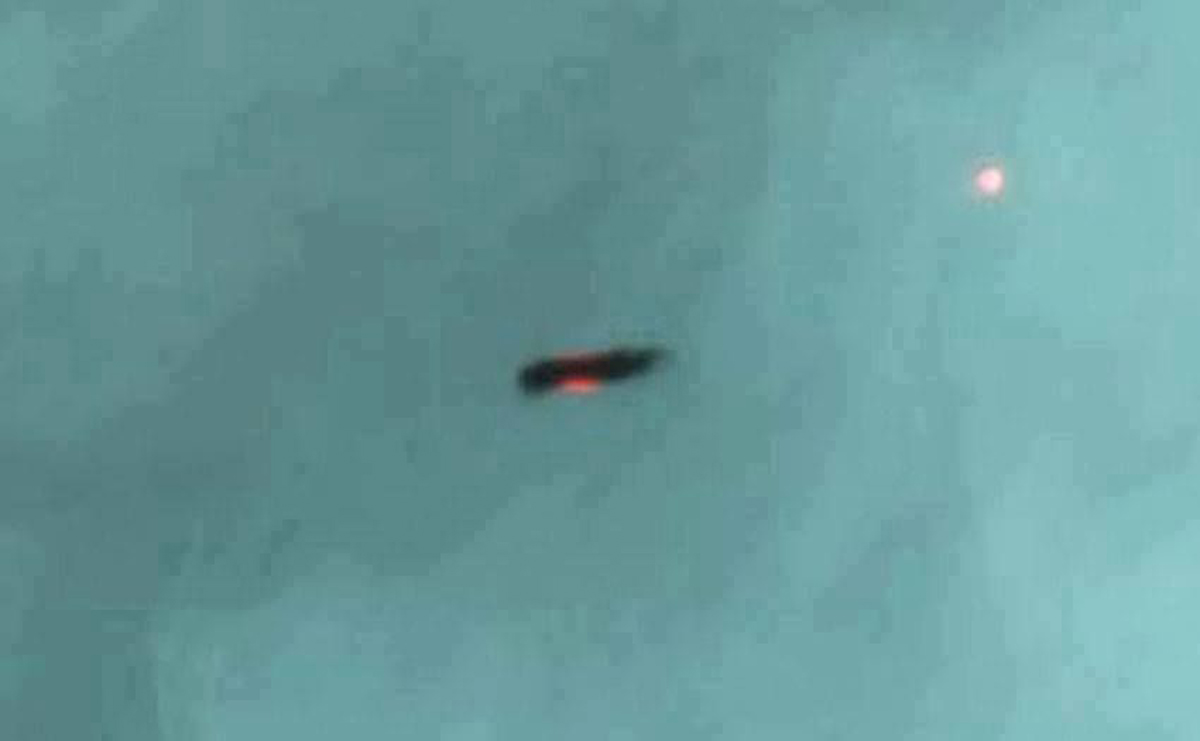
This Hubble image is extraordinary. It shows a protoplanetary disk seen in silhouette against the Orion Nebula. The Solar System would have looked just like that 4.5 billion years ago... Planet formation is a hazardous process.
This image, taken by the NASA/ESA Hubble Space Telescope, shows a dust disk around an embryonic star in the Orion Nebula being 'blowtorched' by a blistering flood of ultraviolet radiation from the region's brightest star. Within such a disk are the seeds of planets. The doomed system looks like a hapless comet, with a wayward tail of gas boiling off the withering, pancake-shaped disk...We were luckier 4.5 billion years ago.
Bonus:
Europa’s Surface (Jupiter’s Mysterious Icy Moon) – Illustration

Europa is the smallest of the four Galilean moons orbiting Jupiter, and the sixth-closest to the planet of all the 79 known moons of Jupiter. It is also the sixth-largest moon in the Solar System. Europa was discovered in 1610 by Galileo Galilei. Europa orbits Jupiter at about 417,000 miles (671,000 kilometers) from the planet. Light from the Sun takes about 45 minutes to reach Europa. Because of the distance, sunlight is about 25 times fainter at Jupiter and Europa than at Earth.
Europa’s water-ice surface is crisscrossed by long, linear fractures. The surface of this moon appears to be no more than 40 to 90 million years old, which is youthful in geologic terms (the surface of Callisto, another of Jupiter’s moons, is estimated to be a few billion years old). Along Europa's many fractures, and in splotchy patterns across its surface, is a reddish-brown material whose composition is not known for certain, but likely contains salts and sulfur compounds that have been mixed with the water ice and modified by radiation. This surface composition may hold clues to the moon's potential as a habitable world.
Life on Europa could exist in its under-ice ocean, perhaps in an environment similar to Earth's deep-ocean hydrothermal vents. If we eventually find some form of life at Europa, it may look like microbes, or maybe something more complex. If it can be demonstrated that life formed independently in two places around the same star, it would then be reasonable to suspect that life springs up in the universe fairly easily once the necessary ingredients are present, and that life might be found throughout our galaxy, and the universe.
In October 2024, NASA will launch a spacecraft called Europa Clipper, which will use multiple flybys of the moon to investigate the habitability of this ocean world. The Europa Clipper orbiter will swoop around Jupiter on an elliptical path, dipping close to the moon on each flyby to conduct detailed reconnaissance. The science includes gathering measurements of the internal ocean, mapping the surface composition and its geology, and hunting for plumes of water vapor that may be venting from the icy crust.
Tuesday, April 6, 2021
Jezero Crater viewed by Mars Express. Spectacular! You can also explore more of the crater with Flyover movies, elevation maps, 3D views and detailed colour scenes: ESA’s Mars Express and ExoMars Trace Gas Orbiter missions have provided imagery of Jezero Crater and the surrounding region in support of NASA’s Mars 2020 Perseverance rover landing on 18 February 2021.
Bonus:
Our observable universe is 13.8 billion years old. It’s about 93 billion light years in diameter. It contains at least 200 billion galaxies and over 700 quintillion planets. As of now, over 4,300 exoplanets has been confirmed. They’re called exoplanets because they exist outside our solar system. At least 55 of them orbit in the habitable zone of other stars. Our Milky Way galaxy is 100,000 light-years across. That’s basically 946 quadrillion km (588 quadrillion mi).
The Milky Way galaxy contains up to 400 billion stars and anywhere between 100 to 200 billion planets. Our galaxy alone contains at least 6 billion Earth-like planets. These are planets that may have the right conditions to support the existence of life. With all these astonishing numbers of galaxies, starts and planets, do you still think we’re alone in the universe? Our solar system alone contains promising places where we could find alien life. The list includes Titan (Saturn’s largest moon), Enceladus (Saturn’s sixth-largest moon), Europa (Jupiter’s ocean moon) and Mars.
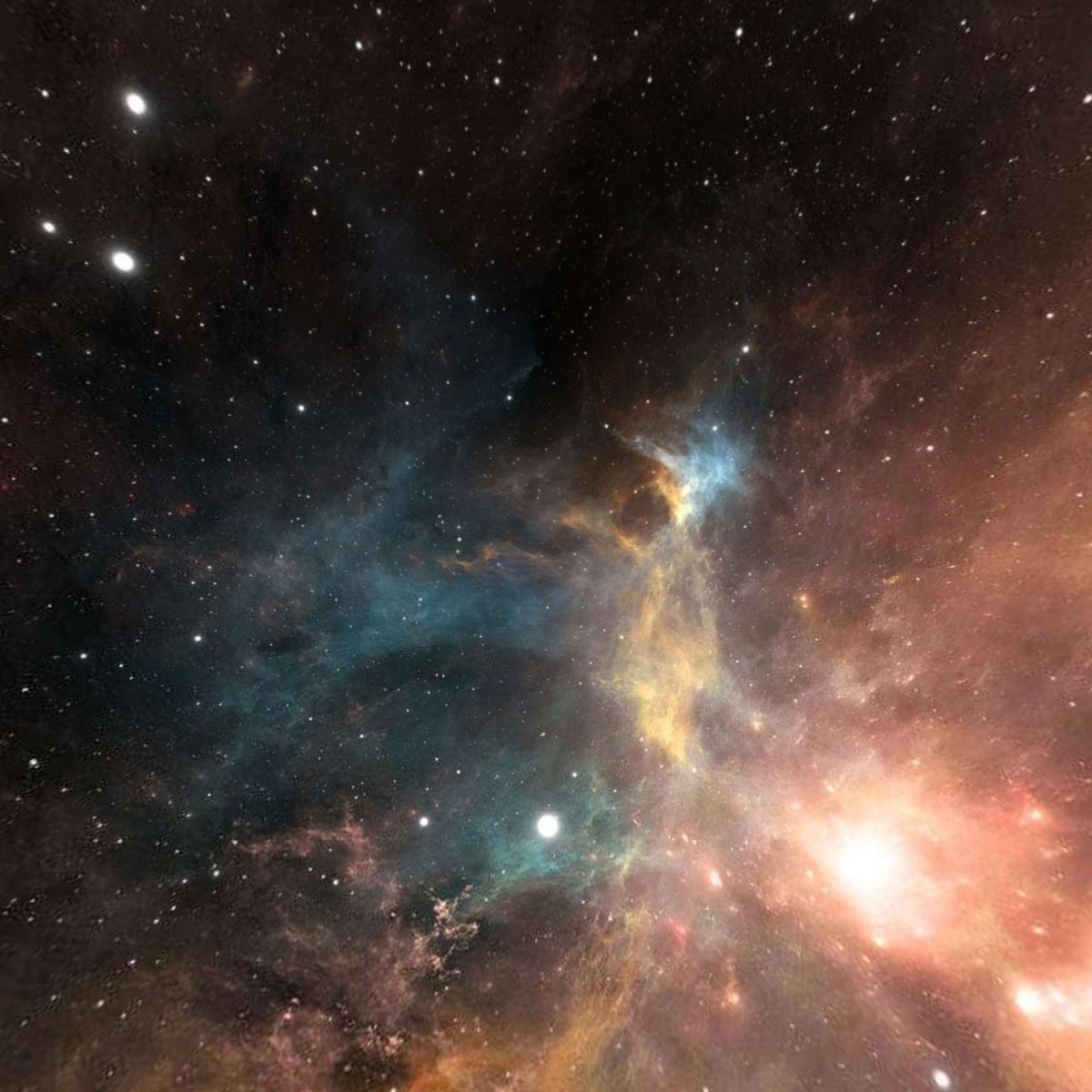
Wednesday, April 7, 2021
Aurora over an erupting volcano

"The night the Geldingadalur volcano erupted last week, I began scouting locations for this shot. Unfortunately, cloud cover spoiled the weekend auroras here. It was a huge disappointment. Last night as the skies darkened, an unexpected snow squall appeared, blotting out the sky and even the eruption itself. Another heartbreaker - until the skies cleared just before midnight. When they did, the aurora promptly lit off over the volcano. It was a magical sight, and one I took especially to heart because it happened to be my birthday!"
Thursday, April 8, 2021
The Curiosity rover is going nuts on Mars! Walnut-shaped rock perched on top of Mont Mercou at Gale crater.
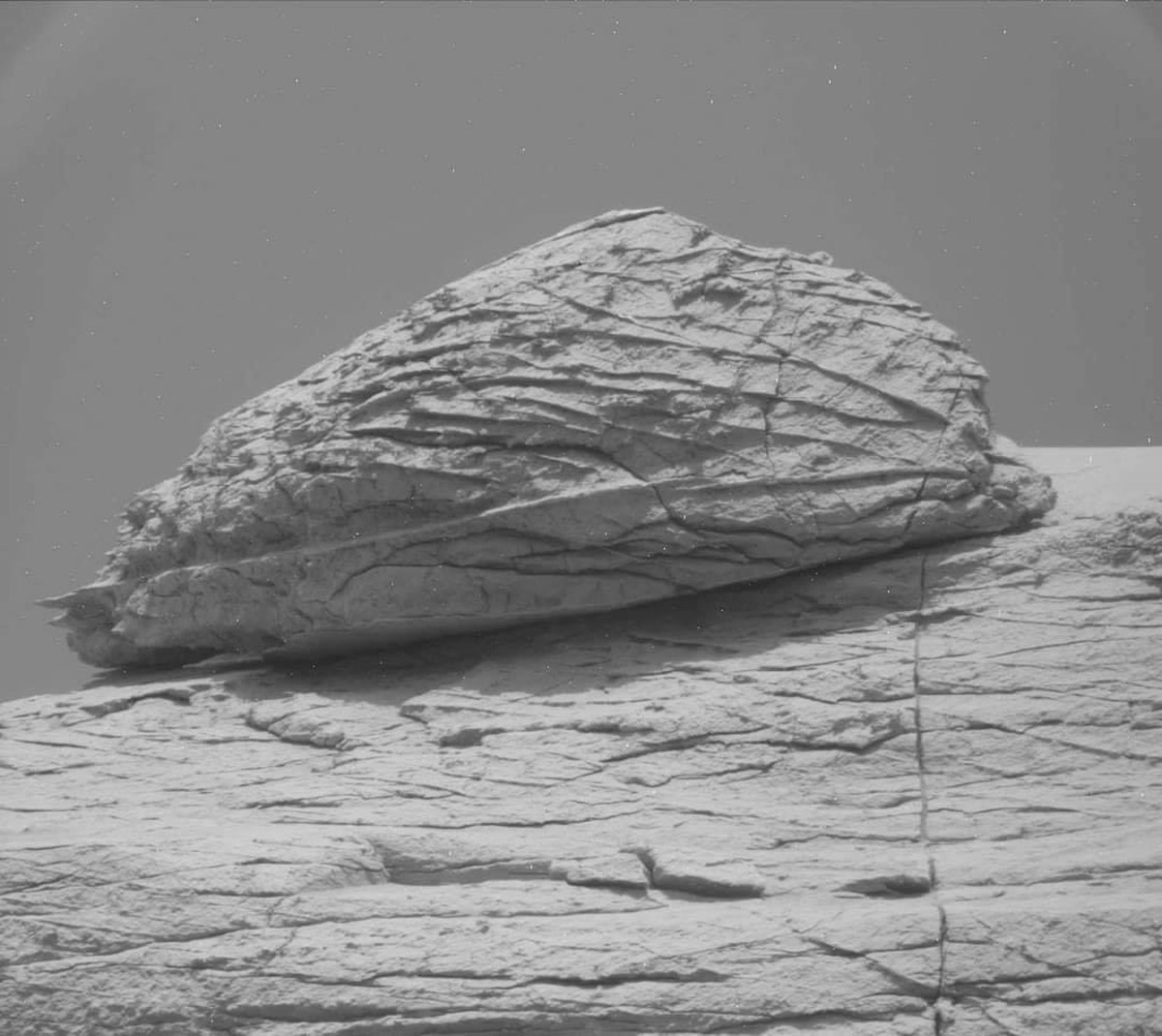
Friday, April 9, 2021
The Tallest Peaks - Vertical structures, among the tallest seen in Saturn's main rings, rise abruptly from the edge of Saturn's B ring to cast long shadows on the ring in this image taken by NASA's Cassini spacecraft two weeks before the planet's August 2009 equinox. Part of the Cassini Division, between the B and the A rings, appears at the top of the image, showing ringlets in the inner division.
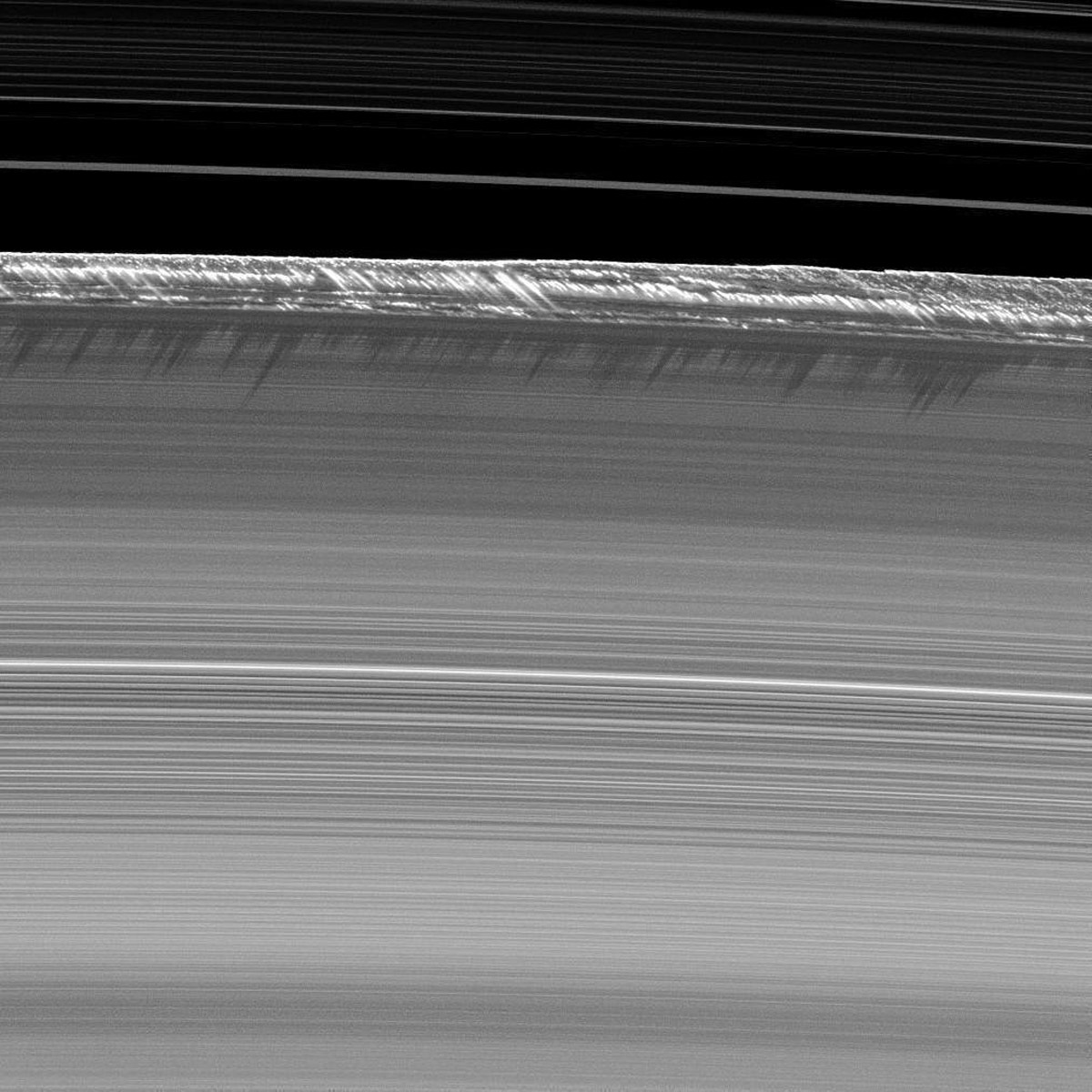
In this image, Cassini's narrow angle camera captured a 1,200-kilometer-long (750-mile-long) section arcing along the outer edge of the B ring. Here, vertical structures tower as high as 2.5 kilometers (1.6 miles) above the plane of the rings -- a significant deviation from the vertical thickness of the main A, B and C rings, which is generally only about 10 meters (about 30 feet). Cassini scientists believe that this is one prominent region at the outer edge of the B ring where large bodies, or moonlets, up to a kilometer or more in size, are found. It is possible that these bodies significantly affect the ring material streaming past them and force the particles upward, in a "splashing" manner.
This image and others like it (see PIA11669) are only possible around the time of Saturn's equinox, which occurs every half-Saturn-year, or about every 15 Earth years. The illumination geometry that accompanies equinox lowers the sun's angle to the ring plane and causes structures jutting out of the plane to cast long shadows across the rings. The "season" of equinox allows shadows to appear on the rings in the months before and after equinox, but the actual equinox occurred August 11, 2009, as the sun shone directly edge-on to the ring plane. This view looks toward the southern, sunlit side of the rings from about 32 degrees below the ring plane.
The image was taken in visible light with the Cassini spacecraft narrow-angle camera on July 26, 2009. The view was acquired at a distance of approximately 336,000 kilometers (209,000 miles) from Saturn and at a sun-Saturn-spacecraft, or phase, angle of 132 degrees. Image scale is 2 kilometers (1 mile) per pixel.





